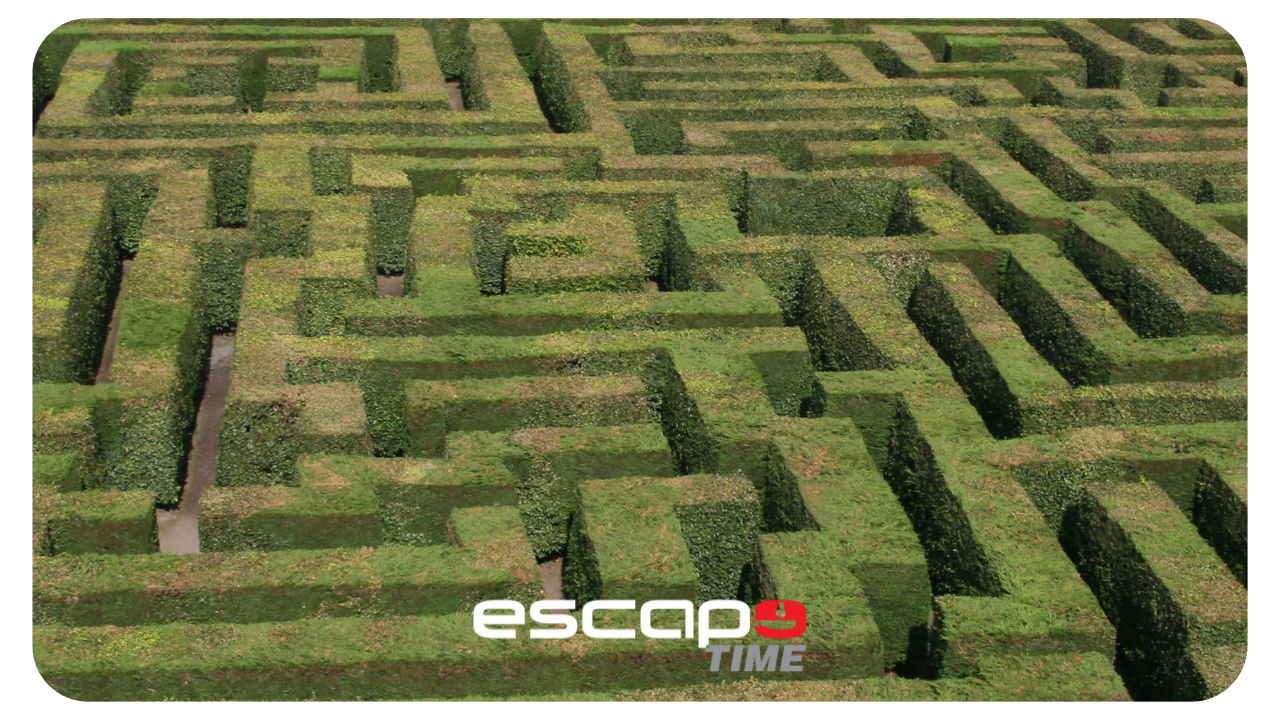

 Posted by trafego on 06 Setembro, 2021
Posted by trafego on 06 Setembro, 2021
For this week's #EscapeCult we're going to talk about a challenge that has followed humanity from ancient Greece to the most ancient civilizations, we're going to talk about the origin of labyrinths.
Well, before we start, let's get to the labyrinth concept?
The word labyrinth comes from the Latin labyrinthus, although its earliest origins come from the Greek language. In its context, it means an artificially created space, with several passages and paths, so that the person is very confused and does not find the way out, that is, it is almost “impossible” to find it. In fact, the purpose of a labyrinth is exactly to help the individual to find his way out, but not in an easy way, since there is only one entrance and one exit and there are no closed alleys, leading nowhere.
The labyrinths have existed for about 4,000 years and are present in many religions and cultures, so much so that it is very common to exist in the constructions of old cathedrals. In fact, labyrinths come from very ancient times, like Ancient Egypt, for example, where they were found in square and rectangular shape. The circular-shaped labyrinths only appeared around the 7th century BC. C. Some historians say that the greatest achievement of the Egyptians would not be the pyramids, but a labyrinth created south of Cairo, which bears the name of Birqkat Qarun (the Pool of Korah) and would have been the work of Pharaoh Amenenhat III, of the XI Dynasty.
In the past, labyrinths were used as a form of trap. The medievals, as a form of representation of man's path to God. During the Crusades, they were used as a symbolic representation of the pilgrimage to the Holy Land, with its center representing Jerusalem. Today, however, they are used for playful or scenic reasons. There is another use attributed to the labyrinth, which is the alignment of the chakras (psychic centers of the human body): scholars claim that every time a person changes direction, inside a labyrinth, his consciousness also changes from the left to the right side of the brain. , and vice versa, helping to balance these chakras. But, these are just theories, ok?
In World History, we have many famous labyrinths and some legends surrounding them. But the most famous, and I'm sure you've heard of it, is the Labyrinth of Crete, from the famous legend of the Minotaur. Remember? For those who didn't remember, I'll tell you a little… Legend has it that the Labyrinth of the Island of Crete was made by the artisan Daedalus, at the request of King Minos, to imprison his son, the Minotaur.
The Minotaur was born when his father made a request to the god of the seas, Poseidon. The request was precisely for him to reign over Crete. Poseidon said that he would grant his wish, but that a sacrifice must be made. To do this, he sent Minos a bull of the seas for him to sacrifice as an offering to Poseidon. However, when the bull appeared, Minos was so dazzled by its beauty that he didn't have the courage to kill it, putting one of his bulls in its place, believing that Poseidon wouldn't notice the change.
However, Poseidon realized that he was deceived and, as a punishment, he did not take his throne. He made Minos' wife fall in love with the bull, and from that union the Minotauro was born, half man, half bull.
King Minos, with contempt for his wife's “son” but not brave enough to kill him, had the labyrinth built so that the Minotaur would be imprisoned below the castle. Many years later, Minos defeated the goddess Athena in battle. In revenge, he ordered that every year 7 Athenian girls and 7 boys be sent to the labyrinth. After 3 years, a young man named Theseus voluntarily decided to face the bull. However, upon arriving at the palace, he falls in love with one of the king's daughters, Ariadne. She, responding to the boy's feelings, hands him the sword that would kill the Minotaur and a ball of yarn, so as not to get lost in the labyrinth and find her way back.
The young and strong Theseus, very cautiously, kills the Minotaur and manages to find his way out of the labyrinth, rescuing the Athenians who were there alive. The fight between the young Theseus and the Minotaur is portrayed by the most diverse artists around the world and throughout human history.
This legend is one of the oldest and most respected, becoming, over the years, a great classic of literature. However, there are those who believe that the Minotaur legend goes much further than a story. It is the search for understanding the origin of the individual's actions, in addition to an analysis of self-knowledge, human strength and present feelings, such as greed, betrayal, loyalty and others.
Source: https://universonerd.net/portal/todascategorias/origem-dos-labirintos/